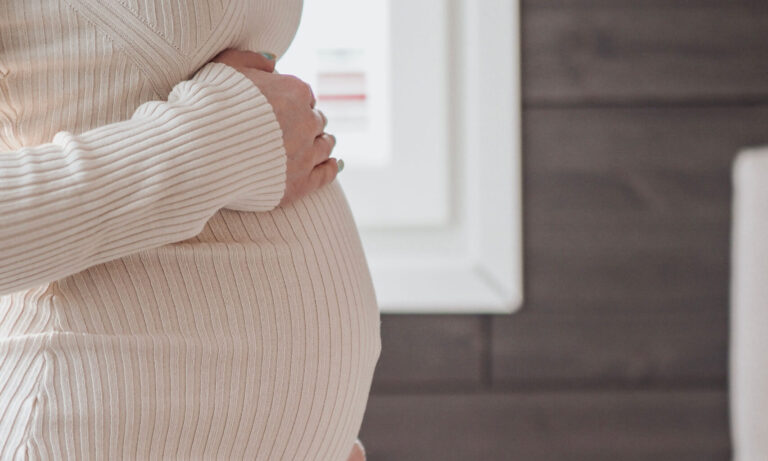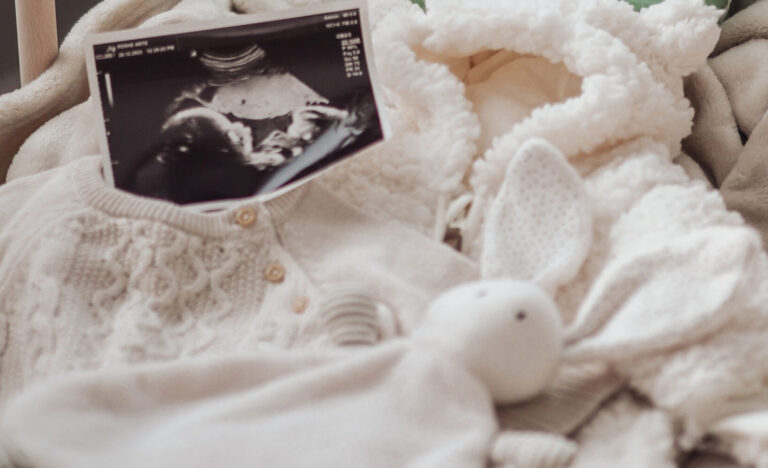Ovulation is an important part of a woman’s menstrual cycle and fertility, but what exactly happens during it? In this article, we dive into the secrets of ovulation, i.e. the process in which the egg is released and is ready to be fertilized. We go through the stages of ovulation, recognize its signs and find out how this natural event affects a woman’s body. Whether your goal is pregnancy planning or a deeper understanding of your own body, ABC of Ovulation provides you with the information you need.
The Basics of Ovulation: Understand Your menstrual cycle
Understanding the basics of ovulation starts with knowing the menstrual cycle. The menstrual cycle, which starts from the first day when the menstrual bleeding starts and ends at the beginning of the next menstrual bleeding, typically lasts 28 days, but can vary between 21 to 35 days depending on the woman. In the middle stages of the cycle, usually about 14 days before the start of the next menstrual cycle, ovulation occurs, i.e. the release of the egg. This is the time when a woman is at her most fertile. The egg only lives for about 12-24 hours after ovulation, but since the sperm can live in the woman’s body for up to five days, the possible window for fertilization is wider. Understanding ovulation helps to identify the best times to get pregnant or to avoid pregnancy through natural means. That’s why knowing your menstrual cycle is key when you learn to recognize and anticipate your own fertile days.
Anatomy and physiology of the release of the egg
The anatomy and physiology of the release of the egg is a key part of the ovulation process. Ovulation occurs when a maturing egg in the ovary peaks under the regulation of hormones, particularly follicle-stimulating hormone (FSH) and luteinising hormone (LH). These hormones promote the maturation of the egg and eventually the peak of luteinising hormone leads to the rupture of the follicle, allowing the mature egg to be released from the ovary. The egg moves through the fallopian tube towards the uterus, and this is the moment of potential fertilisation if sperm are present. After the egg is released from the ovary, the remaining follicle turns into a corpus luteum, which produces progesterone to prepare the uterus for a possible pregnancy. If the egg does not fertilise, the corpus luteum atrophies, progesterone production decreases and menstruation begins, restarting the cycle. By understanding the anatomy and physiology of this process, you can better identify and predict the time of ovulation.
Ovulation timing: When are you most fertile?
The timing of ovulation is a key factor in determining when you are most fertile. By understanding the stages of your menstrual cycle and recognising the signs of ovulation, you can better plan or prevent pregnancy. The most fertile period usually lasts for about six days – five days before ovulation and the day of ovulation itself. It is during this window that the egg is ready to fertilise and the sperm has the best chance of reaching the egg. This period is affected by many factors, such as stress or lifestyle changes, which can alter the length or timing of the cycle. To identify this critical phase, you can use ovulation tests, monitor your basal body temperature or observe other natural signs in your body such as changes in cervical mucus. These methods can help you learn to identify when ovulation is occurring in your cycle, so you can make better use of your fertile time.
Although these signs vary from woman to woman, recognising them can be helpful for those trying to get pregnant or monitor their own fertility.
Recognise the signs and symptoms of ovulation
By recognising the signs and symptoms of ovulation, it is possible to better understand your body and your menstrual cycle. Around the time of ovulation, many women may experience distinct physical and hormonal changes. Some of the most common signs include an increase in clear, stretchy cervical mucus that resembles egg white. This mucus is a sign that the body is preparing for a possible pregnancy. Other women may also experience mild abdominal pain or a pinching sensation on one side of the lower abdomen, called mittelschmerz pain. In addition, some women report increased sexual desire and breast tenderness. A slight rise in body temperature may also indicate ovulation. Although these signs vary from woman to woman, recognising them can be helpful for those trying to get pregnant or monitor their own fertility.
How do lifestyle choices affect ovulation?
Lifestyle choices can have a significant impact on ovulation and fertility in general. Diet, exercise, stress levels and sleep are all factors that can affect how regularly and efficiently ovulation occurs. For example, excessive exercise or low body fat can lead to irregular menstrual cycles or even no ovulation. Similarly, being overweight can affect hormone levels, which can also disrupt the menstrual cycle. Maintaining a healthy and balanced diet, getting enough sleep and using stress management techniques can help support normal ovulation. In addition, smoking and excessive alcohol consumption have been found to be detrimental to ovulation and overall fertility. Listening to your body and leading a healthy lifestyle can help optimise fertility and improve your chances of getting pregnant.

Ovulation pain: Normal or a cause for concern?
Ovulation pain, sometimes called mittelschmerz, is common and is experienced by up to 20% of women. The pain can range from a mild twinge to severe pain and can last from a few minutes to several hours. Although ovulatory pain is usually normal and harmless, in some cases it can be a sign of more serious health problems such as endometriosis or cystitis. The location of the pain usually indicates which ovary is ovulating. If the pain is recurrent and particularly severe, it is advisable to seek medical advice. The doctor can help identify the cause of the ovulation pain and recommend appropriate treatment if necessary. With the right diagnosis and treatment, ovulation pain should not interfere with normal life or cause great concern.
Ovulation tests and monitors: Tools for monitoring ovulation
Ovulation tests and monitors are useful tools for monitoring ovulation, especially for those who are trying to get pregnant or want to get to know their menstrual cycle better. Ovulation tests work by measuring the concentration of luteinising hormone (LH) in the urine. LH levels increase just before ovulation, and this LH peak signals the release of an egg from the ovary. The tests are usually easy to use and can be bought from pharmacies or online shops. More comprehensive monitoring is provided by ovulation monitors, which can also monitor other indicators such as body temperature and hormones, giving a more accurate picture of the timing of ovulation and even the whole menstrual cycle. Using these devices, women can more accurately identify their fertile days, which can help them plan a pregnancy more effectively or monitor the different stages of their cycle.
Fertility awareness: How to monitor and predict ovulation
Fertility awareness refers to the ability to monitor and predict ovulation events during the menstrual cycle. Learning this skill can be valuable for both pregnancy planning and contraception. The main methods of fertility monitoring include measuring body temperature, monitoring cervical mucus and the calendar method. By taking your basal temperature, you can detect a rise in temperature after ovulation, which usually indicates that ovulation has occurred. Examining cervical mucus helps to identify the time of the fertile window, when the mucus is clear and stretchy, which promotes sperm movement. The calendar method, on the other hand, follows the menstrual cycle over a long period of time to predict when ovulation will occur in future cycles. By combining these techniques with any modern technological aids, such as smartphone apps or ovulation monitors, you can gain an accurate understanding of your own fertility.
By understanding these changes, women can better identify where they are in the menstrual cycle.
Changes in the body after ovulation
Post-ovulation changes in the body can be significant and are worth monitoring, especially if you are planning a pregnancy or monitoring your health. After ovulation, if an egg does not fertilise, the corpus luteum begins to break down and levels of estrogen and progesterone fall, eventually leading to the beginning of menstruation. If, on the other hand, the egg does fertilise, the corpus luteum continues to function and produce progesterone, which helps to maintain pregnancy in the early stages. In addition, some women may experience breast tenderness, fatigue or mood changes after ovulation due to hormonal fluctuations. By understanding these changes, women can better identify where they are in their menstrual cycle and contact their health professionals if they experience unusual symptoms.
Common myths and questions about ovulation
Myths and frequently asked questions about ovulation can sometimes lead to misunderstandings and unnecessary worry. One common myth is the belief that a woman can get pregnant at any time during her menstrual cycle. In reality, pregnancy is only possible for a few days around ovulation. Another misconception is that ovulation pain is a sure sign that pregnancy is possible at that time. Although it often occurs around ovulation, it alone does not guarantee a fertile period. The belief that certain positions during sex increase the likelihood of pregnancy during ovulation is also scientifically unfounded. Questions about the identification of ovulation and its impact on fertility are common and it is important to seek reliable information and, if necessary, to consult health professionals for a better understanding. This will help avoid unnecessary concerns and promote healthy pregnancy planning.
Recognize the signs of early pregnancy here!










